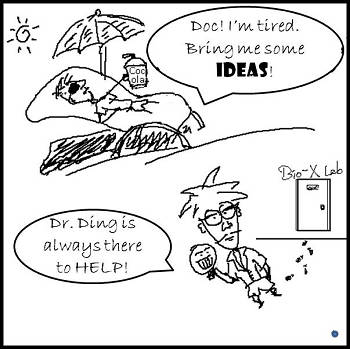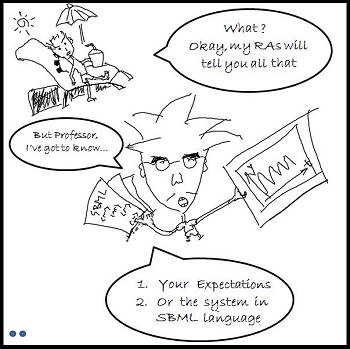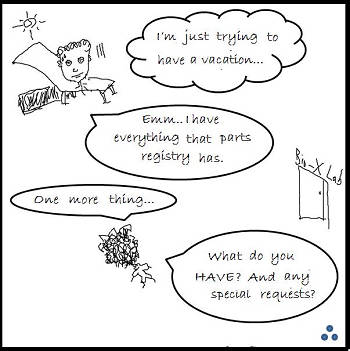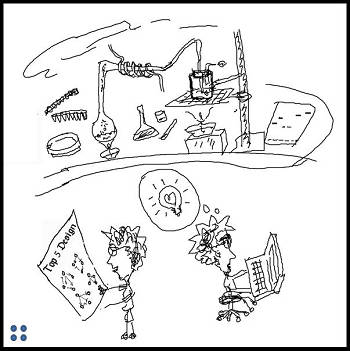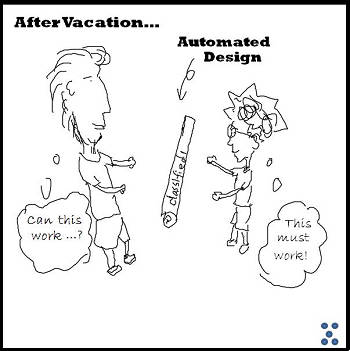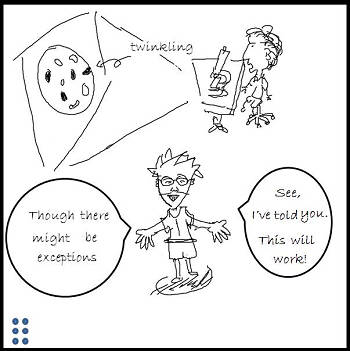Team:USTC Software/Project
From 2009.igem.org
(Difference between revisions)
| (35 intermediate revisions not shown) | |||
| Line 1: | Line 1: | ||
| - | + | __NOTOC__ | |
| - | + | {{USTCSW_Heading}} | |
| - | {| | + | {|valign = "top" border = "0" align = "center" cellspacing = "10" |
| - | + | ||
| - | + | ||
| - | + | ||
| - | + | ||
| - | + | ||
| - | + | ||
| - | + | ||
| - | + | ||
| - | + | ||
| - | + | ||
| - | + | ||
| - | + | ||
|- | |- | ||
| | | | ||
| - | + | <br /> | |
| - | + | <font size = "5">A First Introduction - Dr. Ding's One Summer</font> | |
| - | + | <br /> | |
| + | <br /> | ||
|- | |- | ||
| - | | | + | {|valign = "top" align = "center" border = "0" width = "800px" |
| - | |align="center"|[[ | + | |- |
| - | | | + | |align = "center" width = "400px"| |
| + | [[Image:DBChe1.png|350x350px]] | ||
| + | |align = "justify" cellspacing = "10"| | ||
| + | <big> | ||
| + | :*Do you want to enjoy more sunshine rather than fail and fail again in lab? | ||
| + | |||
| + | :*Do you want to design a biological system with computers rather than by thinking day and night? | ||
| + | :*Do you want to have more reasonable plans rather than an uncertain one for your experiments? | ||
| + | </big> | ||
| + | |- | ||
| + | |align = "justify"| | ||
| + | <big> | ||
| + | :*Follow [https://2007.igem.org/USTC/DingBo Dr. Ding], our ABCD will try to make your dreams come true. | ||
| + | |||
| + | :*Wait!It would be much more efficient to get some general ideas about our ABCD firstly: [https://2009.igem.org/Team:USTC_Software/hoWMMD Mathematical Model], [https://2009.igem.org/Team:USTC_Software/hoWDesign#Design_Level Design Level], [https://2009.igem.org/Team:USTC_Software/hoWDesign#Design_Type_.28Sub_Level.29 Design Type]. | ||
| - | < | + | :*Now, tell ABCD what you want. There are different ways for you to [https://2009.igem.org/Team:USTC_Software/hoWIO Input] your desired dynamics to ABCD. |
| + | </big> | ||
| + | |align = "right"| | ||
| + | [[Image:DBChe2.png|350x350px]] | ||
| + | |- | ||
| + | |align = "left"| | ||
| + | [[Image:DBChe3.png|350x350px]] | ||
| + | |align = "justify"| | ||
| + | <big> | ||
| + | :*Are there any [https://2009.igem.org/Team:USTC_Software/hoWRestriction restrictions] on this biological network that happen to meet your needs? Good news! Dr. Ding will tell you how to complete this in ABCD. | ||
| + | </big> | ||
| + | |- | ||
| + | |align = "left"| | ||
| + | <big> | ||
| + | :*Our ABCD engine starts working. The state of art [https://2009.igem.org/Team:USTC_Software/hoWAlgorithm algorithms] we implement in ABCD will make design process automatically and different feasible solutions will be generated. | ||
| + | </big> | ||
| + | |align = "right"| | ||
| + | [[Image:DBChe4.png|350x350px]] | ||
| + | |- | ||
| + | |align = "left"| | ||
| + | [[Image:DBChe5.png|350x350px]] | ||
| + | |align = "justify"| | ||
| + | <big> | ||
| + | :*How can you find real components to construct the system. Thanks to [http://partsregistry.org/Main_Page BioBricks]. Our [https://2009.igem.org/Team:USTC_Software/hoWDatabase database] makes it possible to retrieve them while some new standards should be proposed. | ||
| - | + | :*Also, if our memory serves right, there are quite a few brilliant software packages specified at BioBrick organizing and related management, for example, [https://2008.igem.org/Team:UC_Berkeley_Tools Clotho] from Berkeley's dry team, 2008. If combined with these softwares, the construction will be even more applicable. | |
| - | + | </big> | |
| - | + | |- | |
| - | + | |align = "justify"| | |
| - | + | <big> | |
| - | + | :*Now, you may feel happy to realize a function such as [https://2009.igem.org/Team:USTC_Software/WhatDemo#Example_1._Synthetic_Oscillator oscillation], [https://2009.igem.org/Team:USTC_Software/WhatDemo#Example_2:_Perfect_Adaptation perfect adaptation] or [https://2009.igem.org/Team:USTC_Software/WhatDemo#Example_3._Bistable_Toggle_Switch bistability] following our solutions. But we still hold earnest expectations. Is it possible to complete the fabrication automatically in the [https://2009.igem.org/Team:USTC_Software/When future]? | |
| - | = | + | </big> |
| - | + | |align = "right"| | |
| - | + | [[Image:DBChe6.png|350x350px]] | |
| - | + | |} | |
| - | + | |} | |
| - | + | {{USTCSW_Foot}} | |
| - | + | ||
| - | + | ||
| - | + | ||
| - | + | ||
| - | = | + | |
| - | + | ||
| - | + | ||
| - | + | ||
Latest revision as of 16:04, 21 October 2009
| About | Team and People | Project | Standard | Notebook | Demo | Safety | External Links |
|---|
|
|
|
| |
|
| |
|
| |
|
| |
|
| |
|
|
 "
"

